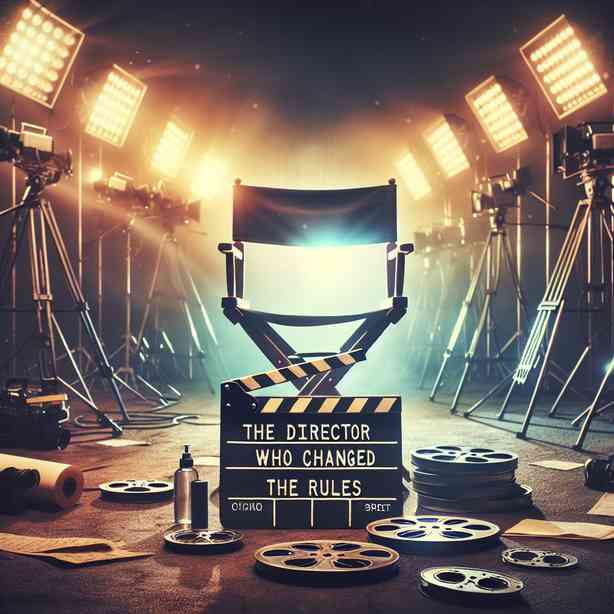
In the ever-evolving landscape of filmmaking, certain directors emerge not just as storytellers but as visionary leaders who redefine the very essence of cinematic expression. One such director who has significantly altered the rules of filmmaking is Christopher Nolan. His unique narrative techniques, innovative approaches to visual storytelling, and ambitious thematic explorations have inspired countless filmmakers and captivated audiences worldwide.
Christopher Nolan’s journey began in the realm of independent filmmaking with his debut feature, “Following,” which showcased his early knack for complex narratives and the exploration of time. However, it was his sophomore effort, “Memento,” that truly brought him into the limelight. This psychological thriller not only challenged traditional storytelling but also introduced viewers to a non-linear narrative structure that would become one of Nolan’s trademarks. A fragmented timeline, where events are presented in reverse order, allowed viewers to experience the protagonist’s memory loss in real-time, creating immense suspense and engagement. This innovative approach set a new standard for psychological thrillers and demonstrated that audiences were hungry for more sophisticated narratives.
Following the success of “Memento,” Nolan continued to push the boundaries of conventional storytelling. “Insomnia,” his Hollywood debut starring Al Pacino and Robin Williams, further showcased his ability to craft complex characters and morally ambiguous narratives. The film explored themes of guilt, morality, and the psychological toll of crime, all while maintaining a gripping narrative pace. Nolan’s ability to intertwine deep philosophical questions with mainstream appeal established him as a force to be reckoned with in Hollywood.
However, it was with “The Dark Knight” that Nolan truly revolutionized the superhero genre. By infusing it with realism, moral complexity, and intricate character development, he elevated the genre to new heights. The portrayal of the Joker, played masterfully by Heath Ledger, transformed a simple antagonist into a chilling embodiment of chaos and anarchy. Nolan’s commitment to practical effects, combined with his exploration of moral ambiguity, turned “The Dark Knight” into a cultural phenomenon. This film not only redefined the superhero genre but also demonstrated the potential of comic book adaptations to engage with deeper themes, ultimately paving the way for future filmmakers to explore similar complexities.
In “Inception,” Nolan further pushed the boundaries of narrative structure, creating a multi-layered reality that challenged viewers’ perceptions of dreams and reality. The film’s intricate plot, revolving around the concept of entering dreams to plant ideas, required audiences to engage critically as they navigated shifting timelines and realities. By blending philosophical concepts with thrilling action sequences, Nolan crafted a film that was not only entertaining but also intellectually stimulating. This ability to intertwine thought-provoking themes with groundbreaking visuals solidified his reputation as a master filmmaker.
Nolan’s dedication to practical effects and traditional filmmaking techniques also distinguishes him from many contemporary filmmakers who rely heavily on CGI. In films such as “Dunkirk,” which depicts the harrowing evacuation of Allied soldiers during World War II, Nolan utilized real ships, planes, and thousands of extras to create a visceral experience. This commitment to realism immerses audiences in the story, making them feel the weight of the characters’ experiences. Moreover, his mastery of sound design and meticulous attention to detail have enhanced the emotional resonance of his films, creating a sensory experience that lingers long after the credits roll.
Another aspect of Nolan’s filmmaking that merits discussion is his exploration of time as a narrative device. Films like “Interstellar” delve into complex theories of time and space, blending scientific concepts with human emotion. By exploring the relationship between time and love through the lens of space travel, Nolan crafts a narrative that transcends traditional boundaries and invites audiences to reflect on profound existential questions. His ability to intertwine the personal with the cosmic demonstrates his unique storytelling prowess and sets him apart as a modern auteur.
Yet, beyond his technical innovations and thematic explorations, what truly defines Nolan’s impact on the industry is his understanding of audience engagement. He has a remarkable ability to create films that cater to both mainstream audiences and cinephiles, a balance that is increasingly rare in today’s film landscape. By crafting narratives that demand attention and contemplation, he engages viewers on a deeper level, encouraging them to participate in the storytelling experience.
Nolan’s influence extends beyond his own films; he has inspired a generation of filmmakers to think outside the box and challenge conventional narratives. His success has proven that audiences are receptive to innovative storytelling, encouraging studios to take risks on original ideas rather than relying solely on established franchises. This shift in the industry landscape has opened doors for diverse voices and new narratives, resulting in a richer cinematic experience for viewers.
As we reflect on Christopher Nolan’s contributions to the film industry, it becomes clear that he is not merely a director but a transformative figure who has changed the rules of filmmaking. His innovative approaches to storytelling, dedication to realism, and ability to engage audiences intellectually have set a new standard in cinema. As filmmakers continue to draw inspiration from his work, one cannot help but feel excited anticipation for the future of storytelling, knowing that the boundaries of cinema are continually pushed by visionary artists like Nolan.
In a world that is constantly changing, the importance of originality and emotional engagement in storytelling cannot be overstated. Nolan’s films remind us that cinema is not just a medium for entertainment but a powerful tool for exploration and understanding. As we continue to experience the magic of film, we should remember the groundbreakers who have paved the way for new ideas, questioning the status quo and pushing the limits of creativity.
Looking ahead, one can only imagine the possibilities for the future of filmmaking inspired by the likes of Christopher Nolan. The evolution of cinema depends on embracing innovation while retaining the core elements that make storytelling so compelling. As audiences, we are fortunate to live in an era where directors are changing the rules, crafting narratives that not only entertain but also provoke thought and inspire change.
In conclusion, Christopher Nolan stands as a pivotal figure in contemporary cinema, having altered the landscape with his distinctive approach to filmmaking. His work exemplifies the harmonious blend of art and intellect, offering films that resonate emotionally while challenging audiences intellectually. As we continue to engage with his films and the films of those influenced by his work, we celebrate a new era in storytelling where the potential for innovation knows no bounds. The journey of filmmaking is a collaborative movement, and with directors like Nolan at the helm, the future promises to be as thrilling and thought-provoking as the stories we cherish today.


